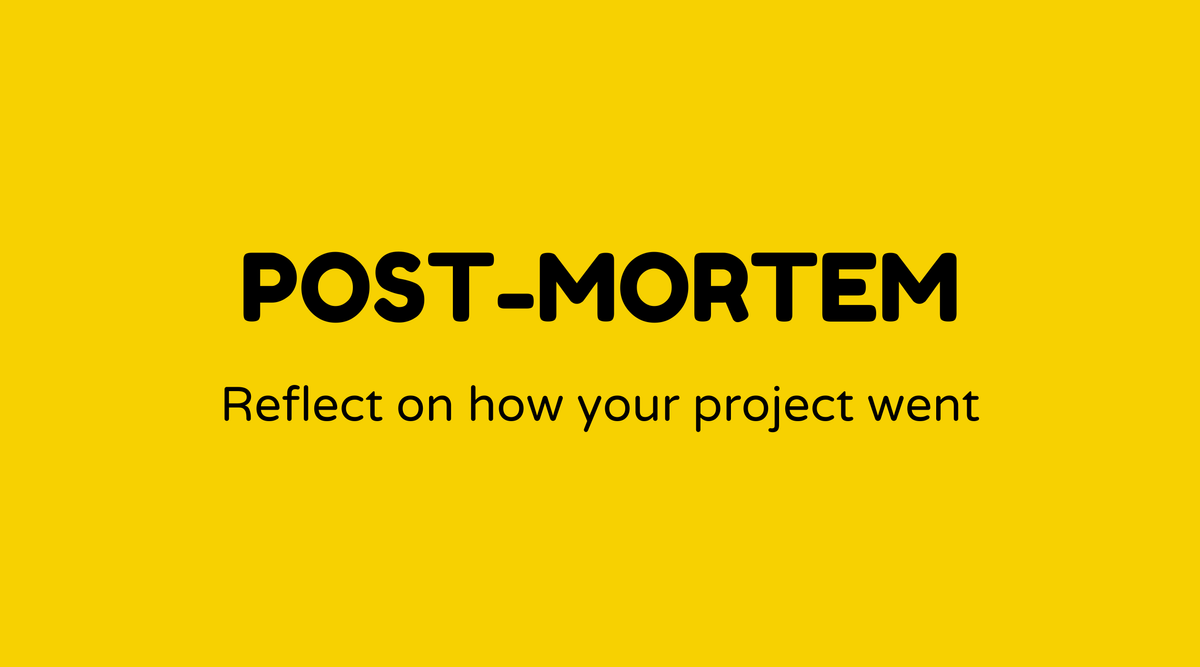Post-mortem

Overview of Post-Mortem:
A post-mortem is not as grim as it sounds; it's a reflective analysis used in various areas, especially in project management and software development. After completing a project or reaching a major milestone, a team comes together to evaluate what worked, what didn’t, and how future processes could be improved. This process is important for refining workflows and promoting ongoing enhancement.
Why Post-Mortem Matters:
Conducting a post-mortem is essential. It enables teams to learn from their experiences, encompassing both achievements and setbacks. It promotes a culture of transparency and growth. By identifying issues, such as miscommunication or unrealistic deadlines, teams can adjust strategies, enhance efficiency, and avert similar challenges in subsequent projects.
What is Post-Mortem:
A post-mortem is a structured review at the end of any project. Typically, it consists of a meeting or series of discussions where team members share observations and insights. The focus is on drawing valuable lessons. The ultimate goal is to transition toward smoother, quicker, and more successful future projects.
Here's a straightforward breakdown of a typical post-mortem:
- Preparation: Collect relevant information and feedback.
- Discussion: What worked, what didn’t, and why?
- Documentation: Record takeaways and action items.
- Implementation: Apply insights to future endeavors.
How to Conduct a Post-Mortem:
Conducting a post-mortem involves several steps:
-
Schedule the Meeting: Set a date soon after project completion while details are fresh. Invite key stakeholders and team members.
-
Gather Relevant Data: Collect information and feedback regarding the project's performance, timeline, and outcomes. Ensure everyone has access to these materials in advance.
-
Create an Agenda: Outline discussion topics. Common areas include success metrics, improvement opportunities, unexpected challenges, and lessons learned.
-
Encourage Open Discussion: Cultivate an atmosphere where team members feel comfortable sharing candid feedback.
-
Identify Key Lessons: Determine what to continue, modify, and avoid in future projects.
-
Document Outcomes: Write a detailed report summarizing insights and suggested changes.
-
Distribute Findings: Share the report with all participants and relevant stakeholders.
Sample Agenda of Post-Mortem:
A structured agenda keeps the post-mortem focused and productive. Here's a sample agenda:
| Time | Topic |
|---|---|
| 0-10 mins | Introduction and Objectives |
| 10-30 mins | Review of Project Objectives |
| 30-60 mins | Success Stories |
| 60-90 mins | Challenges and Failures |
| 90-110 mins | Lessons Learned |
| 110-120 mins | Action Items and Conclusion |
Examples of Post-Mortem:
Let's look at some real-world examples of successful post-mortems:
-
Tech Start-Up Launch: A quick product launch encountered unexpected server issues. A post-mortem clarified root causes and led to improved server management practices, benefiting their next launch.
-
Marketing Campaign: An advertising firm assessed an underperforming campaign. A post-mortem revealed misalignment with target demographics, leading to a revised strategy for future efforts.
-
Construction Project: A large-scale building project exceeded budget. The post-mortem highlighted procurement delays and prompted the company to streamline supplier contracts, saving time in upcoming projects.
FAQs
What is the purpose of a post-mortem in project management?
A post-mortem evaluates completed projects for insights into achievements and challenges to enhance future workflows.
Who should attend a post-mortem meeting?
Key stakeholders, including team members involved in the project and individuals who can provide constructive feedback, should participate.
How long should a post-mortem last?
Typically, a post-mortem lasts between 1 to 2 hours, but this can vary based on project complexity.
How soon after project completion should a post-mortem be conducted?
Hold a post-mortem shortly after project completion to ensure all information is current, usually within a week or two.
What’s the difference between a post-mortem and a retrospective?
A post-mortem takes place after project completion, while a retrospective occurs at the end of each iteration or sprint within a project.
Why is documenting outcomes important in a post-mortem?
Documentation serves as a record of insights and action items, ensuring learnings inform future project plans and improvements.



